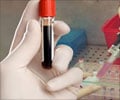A new reservoir for hidden HIV-infected cells that can serve as a factory for new infections has been identified by University of Michigan scientists.
A new reservoir for hidden HIV-infected cells that can serve as a factory for new infections has been identified by University of Michigan scientists.
The findings, which appear online March 7 in Nature Medicine, indicate a new target for curing the disease so those infected with the virus may someday no longer rely on AIDS drugs for a lifetime."Antiviral drugs have been effective at keeping the virus at bay. However once the drug therapy is stopped, the virus comes back," says senior author of the study Kathleen L. Collins, M.D., Ph.D., associate professor of both internal medicine and microbiology and immunology at the U-M Medical School.
In people infected with HIV (human immunodeficiency virus), the virus that causes AIDS, there''s an unsolved problem with current anti-viral drugs. Though life-saving, they cannot root the virus out of the body. Infected cells are able to live on, undetected by the immune system, and provide the machinery for the virus to reproduce and spread.
Important new research by U-M has discovered that bone marrow, previously thought to be resistant to the virus, can contain latent forms of the infection.
"This finding is important because it helps explain why it''s hard to cure the disease," Collins says. "Ultimately to cure this disease, we''re going to have to develop specific strategies aimed at targeting these latently infected cells."
"Currently people have to take anti-viral drugs for their entire life to control the infection," she says. "It would be easier to treat this disease in countries that don''t have the same resources as we do with a course of therapy for a few months, or even years. But based on what we know now people have to stay on drugs for their entire life."
Advertisement
While further studies are needed to demonstrate that stem cells can harbor the HIV virus, the study results confirm that HIV targets some long-lived progenitor cells, young cells that have not fully developed but mature into cells with special immune functions. When active infection occurs the toxic effects of the virus kill the cell even as the newly made viral particles spread the infection to new target cells.
The new research gives a broader view of how HIV overwhelms the body''s immune system and devastates its ability to regenerate itself.
Globally more than 30 million people are infected with HIV, including millions of children. Improvements have been made since the 1990s in the way the disease is treated that has led to an 85 percent to 90 percent reduction in mortality.
"Drugs now available are effective at treating the virus, making HIV more of a chronic disease than a death sentence," Collins says. "This has made a huge impact in quality of life, however only 40 percent of people worldwide are receiving anti-viral drugs and unfortunately that means that not everybody is benefiting."
Additional authors: Christoph C. Carter, Adewunmi Onafuwa-Nuga, Lucy A. McNamara, James Riddell IV, and Dale Bixby, all of U-M; and Michael R. Savona, University of Texas Health Science Center, San Antonio, Texas, formerly of U-M Heath System.
Funding: National Institutes of Health. The work of first author Carter was supported by the Wellcome Foundation, U-M Molecular Mechanisms in Microbial Pathogenesis Training Grant and a Rackham Predoctoral Fellowship, and McNamara''s work was supported by a National Science Foundation Predoctoral Fellowship and a Bernard Maas Fellowship.
Source-Newswise
RAS









